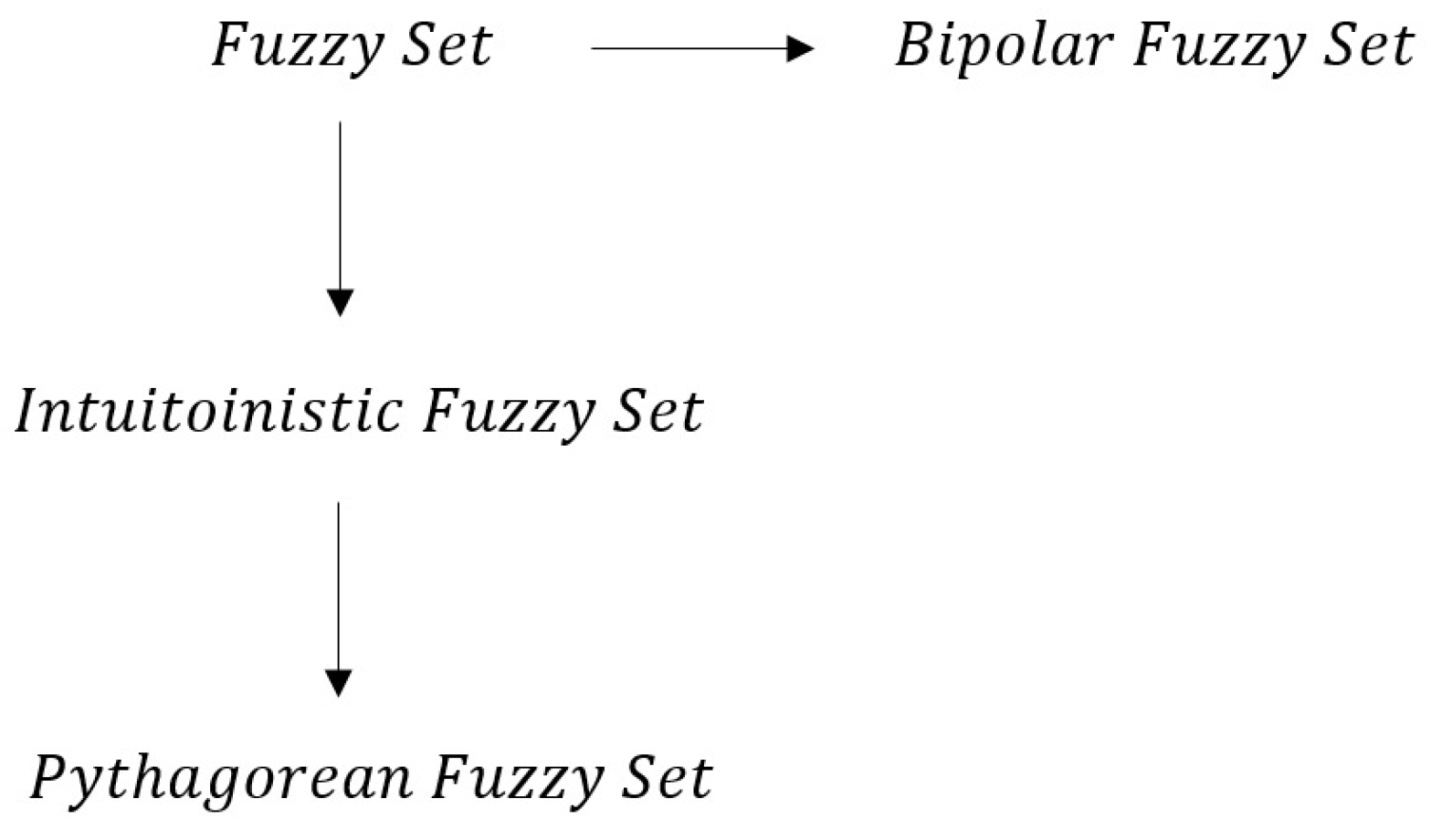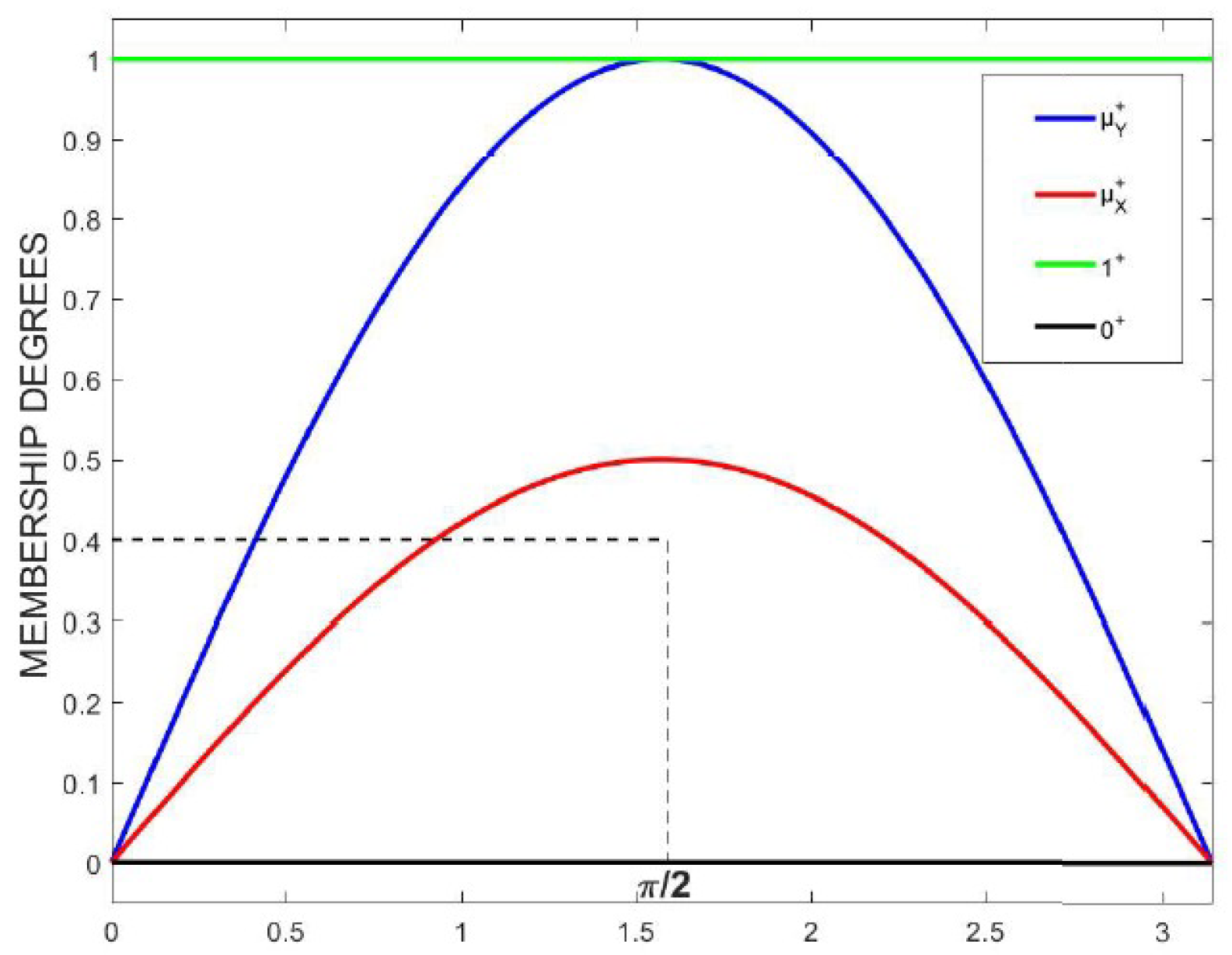Case Study
Dealing with uncertainty is inherent in medical diagnosis problems, and the introduction of bipolar fuzzy sets offers a valuable perspective. In this section, we present an illustrative medical diagnosis problem to demonstrate the applicability of the mentioned approach.
Step 1: Problem Area Selection:
Suppose that be the set of patients,
be the set symptoms and
be the set of diseases corresponding to the symptoms S.
We need to find the patient and to find the disease of the patient.
| Patient−Symptom Relation |
| Symptoms | Patients |
| P1 | P2 | P3 | P4 |
| Temperature | (0.8, −0.1) | (0.4, −0.5) | (0.5, −0.6) | (0.9, −0.4) |
| Cough | (0.3, −0.5) | (0.4, −0.8) | (0.6, −0.4) | (0.9, −0.2) |
| Blood Plates | (0.1, −0.3) | (0.7, −0.2) | (0.3, −0.9) | (0.4, −0.7) |
| Joint pain | (0.4, −0.5) | (0.6, −0.5) | (0.6, −0.3) | (0.5, −0.7) |
| Insulin | (0.8, −0.2) | (0.7, −0.3) | (0.3, −0.6) | (0.2, −0.5) |
| Symptom-Disease Relation |
| Diagnosis | Symptoms |
| Temperature | Cough | Blood Plates | Joint pain | Insulin |
| Tuberculosis | (0.6, −0.1) | (0.9, −0.1) | (0, −0.8) | (0, −0.8) | (0, −0.9) |
| Diabetes | (0.1, −0.8) | (0.1, −0.8) | (0.2, −0.1) | (0.2, −0.5) | (0.9, −0.1) |
| Chikungunya | (0.9, −0.1) | (0, −0.8) | (0.7, −0.1) | (0.9, −0.1) | (0.2, −0.8) |
| Swine Flue | (0.2, −0.3) | (0.1, −0.3) | (0.2, −0.1) | (0.1, −0.5) | (0.2, −0.1) |
| Dengeu | (0.9, −0.1) | (0.2, −0.4) | (0.2, −0.4) | (0.3, −0.7) | (0.2, −0.7) |
Step 2: Form bipolar fuzzy supra topologies for () and ():
For ();
(i) , where
and .
We omit some bipolar fuzzy sets of F which are in E and we obtain .
(ii) , where
and = .
(iii) , where
and = .
(iv) , where
and = .
For ();
(i) , where
and .
We omit some bipolar fuzzy sets of H which are in G and we obtain
.
(ii) , where
and = .
(iii) , where
and = .
(iv) , where
and = .
(v) , where
and = .
Step 3: Find Bipolar fuzzy score functions:
For ,
(i) and , where . .
(ii) and , where . .
(iii) and , where . .
(iv) and , where . .
For ,
(i) and , where . .
(ii) and , where . .
(iii) and , where . .
(iv) and , where . .
(v) and , where . .
Step 4: Final Decision:
By organizing bipolar fuzzy score values for the alternatives and the attributes in ascending order, we obtain the following order and . Thus the patient suffers from dengue, the patient suffers from chikungunya, the patient suffers from diabetes, the patient suffers form tuberculosis.












